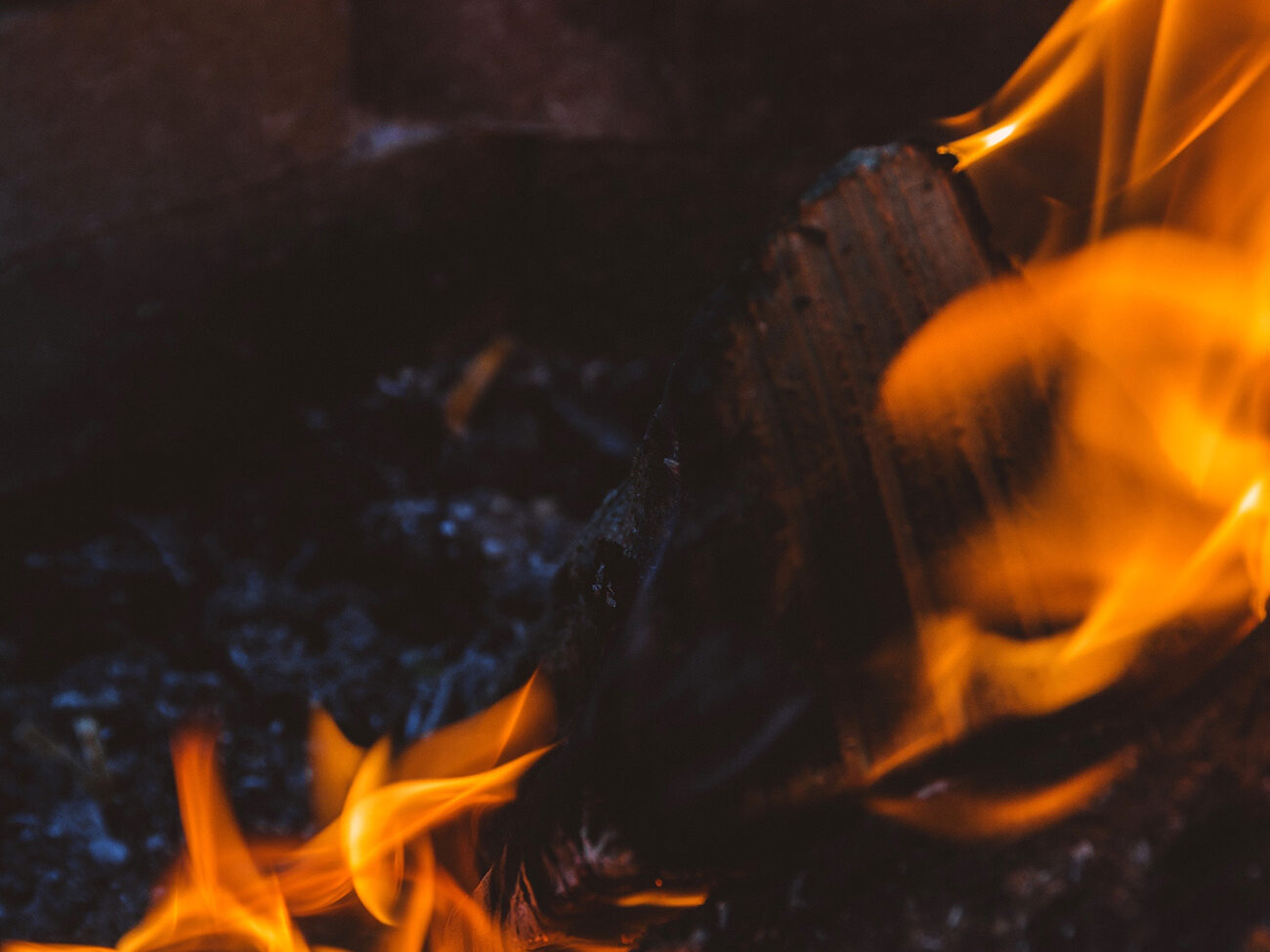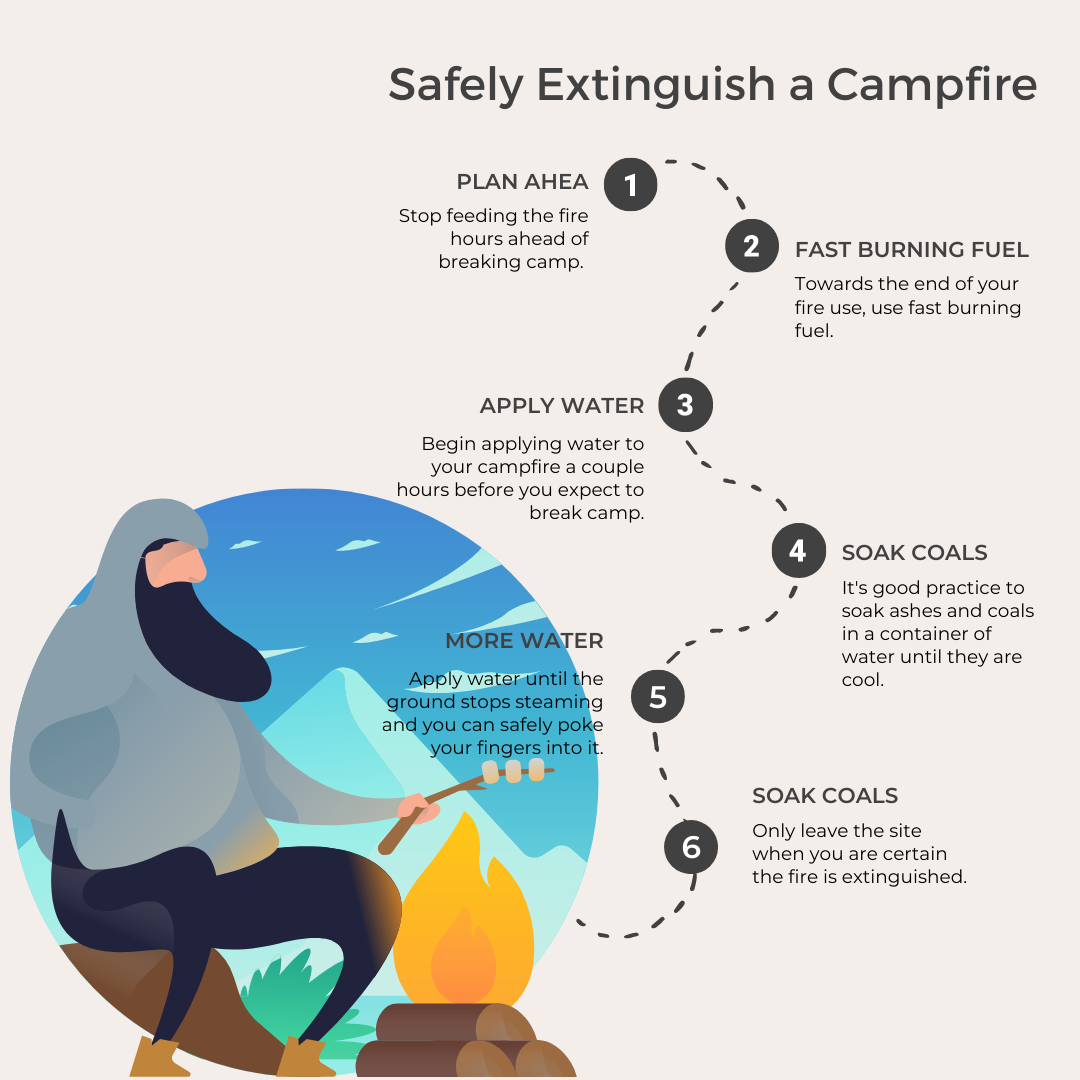Part three in the Campfire 101 series is understanding fire safety. Last year, over 400 of British Columbia’s wildfires began as a result of people being neglectful. Wildfires can effect air quality, destroy communities, wipe out wildlife habitat, and cost millions of dollars.
In some provinces and territories, there are strict rules and regulations around fires. In Ontario, for example, you can be legally responsible for the cost of extinguishing a wildfire should you begin one.

Check Fire Conditions
The first step in preventing wildfires is understanding fire conditions. Every provincial and national park will have posted fire conditions. Usually, you’re given this information upon registry. There are also park signs indicating if the fire hazard is low, moderate, high, or extreme. Depending on the conditions, there may be fire bans.
When you are outside of parks, it is equally important that you check and understand fire conditions and regulate your activity accordingly. Each province has a designated government website with this information. In moderate, high, and extreme conditions, it is good practice to use portable stoves to cook and boil water.
Choosing a Campfire Location
The next step is choosing a suitable location for your fire. When possible use a designated fire pit. If there is no pit, ensure that you are building your fire on a non-flammable surface. This can include sand, gravel, and rock. This is important because root systems and vegetation can ignite leading to underground fires that are hard to detect and can smoulder for months – even years! Eventually, they will emerge to the surface and can cause massive forest fires.
When a given location is unsuitable for a fire, you can use a fire pan. Fire pans are metal containers that will contain fire, coals, and debris. Still, they can become quite hot. Take care that you don’t accidentally ignite the ground with them.
Always, keep the ground around your fire pit clean and clear of materials that can ignite. This includes duff which is organic and decomposing forest litter like leaves, needles, and other plant materials. A general rule is to clear a meter around your fire pit. Also, ensure there are no overhanging branches that could ignite.
Other Precautions (Small Fires, High Winds, and Water)
Keeping a fire small ensures that it does not catch any surrounding vegetation. It also makes it easier to control and extinguish. This is especially important on a windy day. In fact, it’s best that you avoid building fires altogether in high winds.
Another important tip is to keep a pail of water next to your campfire in case of emergencies. It can be a quick way to extinguish sparks or help control a fire.
Lastly, attend your campfire at all times. If you are camping with children, teach them about fire safety.

Properly and Safely Extinguish a Fire
There are several steps to ensure your campfire is properly and safely extinguished:
- Stop feeding the fire hours ahead of breaking camp. Use a canister stove for last minute meals.
- Towards the end of your fire use, use fast burning fuel.
- Begin applying water to your campfire a couple hours before you expect to break camp.
- It’s good practice to soak coals in a container of water. Once they are cool, put them back in the centre of the fire pit.
- Apply water until the ground stops steaming and you can safely poke your fingers into it.
- Only leave the site when you are certain the fire is extinguished.
Campfire 101
Wishing you many happy and safe campfires! Check out my other posts in this series: